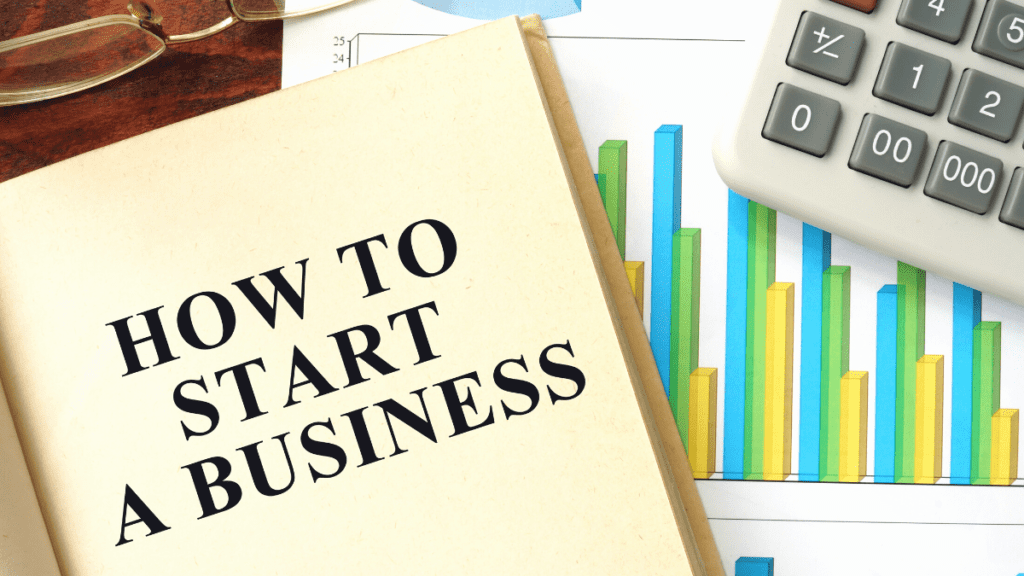10-Step Guide: How to Start a Business from Scratch
Starting a business from scratch can be a daunting task, but with the right approach and preparation, it can also be incredibly rewarding. In this comprehensive guide, we'll walk you through the key steps you need to take to turn your entrepreneurial vision into a successful reality. Whether you're a seasoned entrepreneur or just starting, this guide is designed to provide you with the information you need to start your business with confidence. Let's being now with how to start a business from scratch.
Step 1: Develop Your Business Idea
The first step in starting a business is to develop a clear and concise business idea. This might involve identifying a gap in the market or developing a unique product or service that meets a need. Consider your skills, interests, and passions, and think about how you can use these to create a successful business. Research your target market and competition, and use this information to refine your business idea and ensure it's viable.
Step 2: Create a Business Plan
Once you have a solid business idea, it's time to create a comprehensive business plan. Your business plan should outline your vision, mission, goals, and strategies for achieving success. It should also include a detailed financial plan that outlines your start-up costs, ongoing expenses, and projected income. A solid business plan will help you secure funding, attract investors, and stay on track as you build your business.
Step 3: Choose a Business Structure
Choosing the right business structure is an important decision that will have a significant impact on your business. Consider the legal and tax implications of each structure, and choose the one that best suits your needs. Common business structures include sole proprietorship, partnership, limited liability company (LLC), corporation, and cooperative.
Step 4: Register Your Business and Obtain Licenses and Permits
Once you have chosen your business structure, it's time to register your business and obtain the necessary licenses and permits. This will vary depending on your business type and location but may include registering for a business name, obtaining a tax ID number, and obtaining a sales tax permit.
Step 5: Secure Funding
Securing funding is a critical step in starting a business. Consider your options, including loans, grants, crowdfunding, and angel investors, and choose the option that best suits your needs. Make sure you have a solid financial plan in place, including projected income and expenses, to help you secure funding and stay on track.
Step 6: Develop a Marketing Plan
A strong marketing plan is essential for business success. Your marketing plan should outline your target market, messaging, and strategies for reaching your target audience. Consider your budget, resources, and goals, and develop a comprehensive plan that will help you build your brand, generate leads, and increase sales.
Step 7: Build Your Business Infrastructure
Building a solid business infrastructure is critical for success. This may include setting up a physical location, hiring employees, and establishing systems for accounting, management, and operations. Choose tools and systems that will help you run your business efficiently and effectively, and make sure you have the resources you need to support your growth.
Step 8: Launch Your Business
Once you have completed the previous steps, it's time to launch your business. This may involve hosting a grand opening event, launching a marketing campaign, or simply opening your doors for business. Make sure you have the resources and support you need to make a big impact and be prepared to make adjustments as you grow and evolve.
Step 9: Monitor and Evaluate Your Progress on starting your business
Monitoring and evaluating your progress is an ongoing process in business. Keep track of your financials, marketing efforts, and customer feedback, and make adjustments as needed. Regularly review your business plan and financial projections, and make changes as needed to keep your business on track and growing. Stay focused on your goals and continuously strive to improve and innovate.
Step 10: Stay Focused and Adapt to Change
Finally, it's important to stay focused and be prepared to adapt to change. The business world is constantly evolving, and it's important to be flexible and adapt to new trends and opportunities. Stay on top of industry news and developments, and continuously look for ways to improve and grow your business.
Conclusion
Starting a business from scratch can be a challenging journey, but with the right preparation, planning, and determination, it can also be incredibly rewarding. Use this 10-step guide as a roadmap to help you turn your entrepreneurial vision into a successful reality. Stay focused on your goals, be willing to take risks and learn from your mistakes, and most importantly, never give up.
FAQs
- How do I choose the right business structure for my company?
- What is the most important part of a business plan?
- How much funding do I need to start a business?
- What are the benefits of having a comprehensive marketing plan?
- How do I know if my business is on track for success?
So how to start a business from scratch? Choosing the right business structure will depend on your specific needs and goals. Consider the legal and tax implications of each structure, and choose the one that best suits your business. The most important part of a business plan is the financial plan, which should outline your start-up costs, ongoing expenses, and projected income. The amount of funding you need to start a business will vary depending on the size and type of your business. A comprehensive marketing plan will help you build your brand, generate leads, and increase sales. Regularly monitoring and evaluating your progress will help you know if your business is on track for success.

